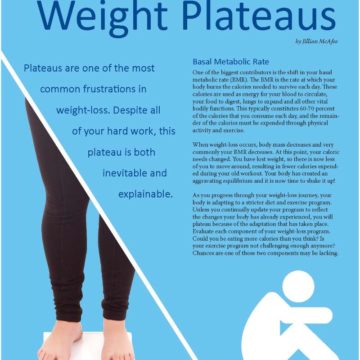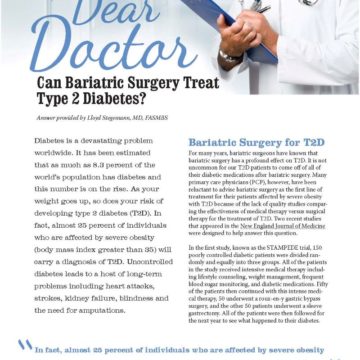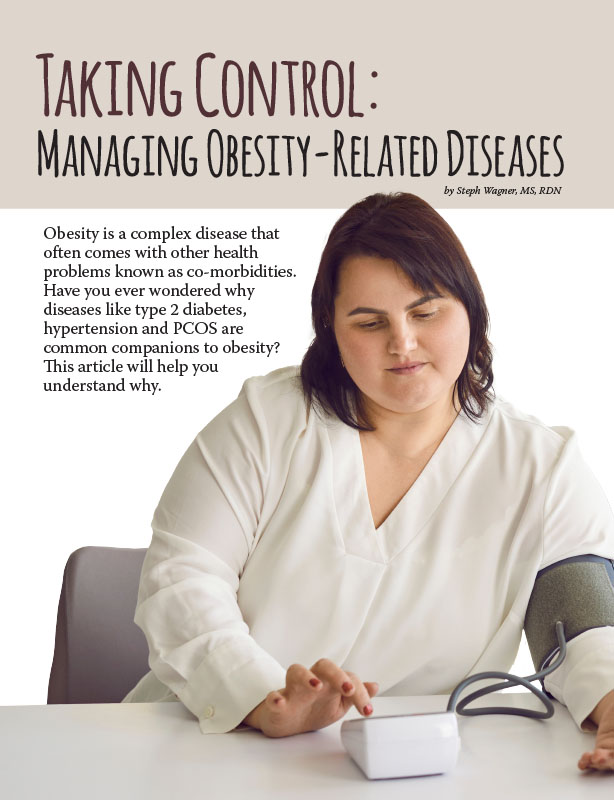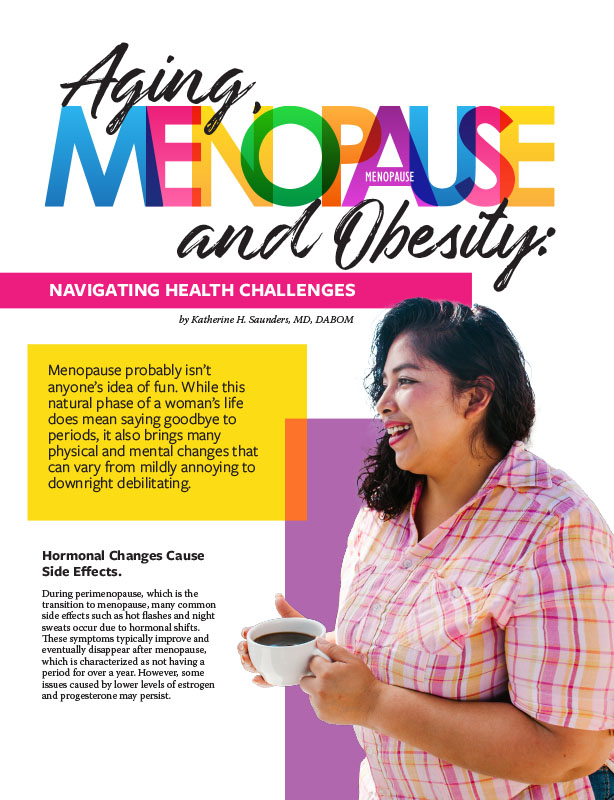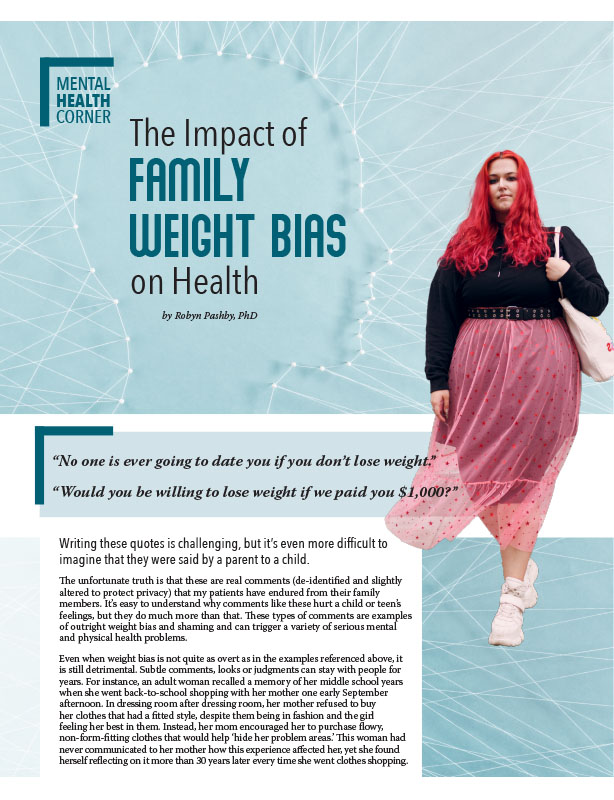Obesity and Depression: An Intertwined Challenge

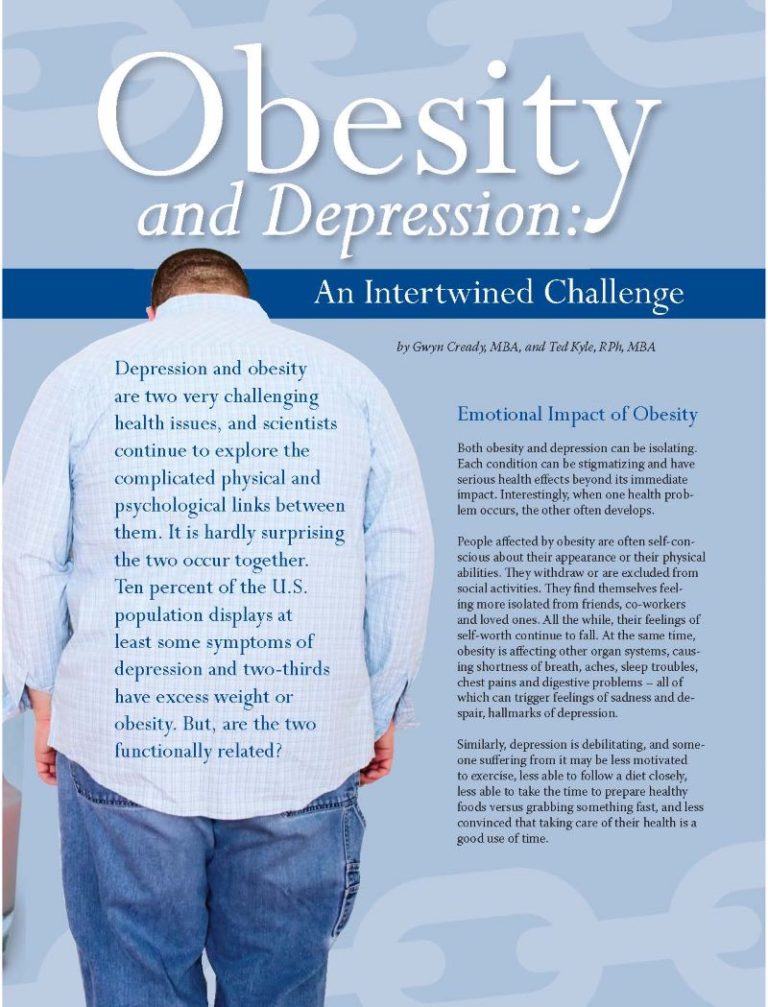
by Gwyn Cready, MBA, and Ted Kyle, RPh, MBA
Summer 2012
Depression and obesity are two very challenging health issues, and scientists continue to explore the complicated physical and psychological links between them. It is hardly surprising the two occur together. Ten percent of the U.S. population displays at least some symptoms of depression and two-thirds have excess weight or obesity. But, are the two functionally related?
Emotional Impact of Obesity
Both obesity and depression can be isolating. Each condition can be stigmatizing and have serious health effects beyond its immediate impact. Interestingly, when one health problem occurs, the other often develops.
People affected by obesity are often self-conscious about their appearance or their physical abilities. They withdraw or are excluded from social activities. They find themselves feeling more isolated from friends, co-workers and loved ones. All the while, their feelings of self-worth continue to fall. At the same time, obesity is affecting other organ systems, causing shortness of breath, aches, sleep troubles, chest pains and digestive problems – all of which can trigger feelings of sadness and despair, hallmarks of depression.
Similarly, depression is debilitating, and someone suffering from it may be less motivated to exercise, less able to follow a diet closely, less able to take the time to prepare healthy foods versus grabbing something fast, and less convinced that taking care of their health is a good use of time.
What’s the Link?
But what explains the coexistence of these two diseases? An analysis of previous studies looking at depression and overweight – body mass index (BMI) between 25 and 29 – and obesity (BMI more than 30) published in the Archives of General Psychiatry in 2010 (Luppino et al.) re-confirmed the link between the two and showed that being affected by obesity at the start of the studies significantly increased the chance of having depression later among people more than 20 years old, but not for teens or children. And, having depression at the start significantly increased the chances of developing obesity later, but not of developing overweight. In this case, neither gender, age nor severity of depression seemed to make study participants more or less likely to be affected by obesity.
In another study (Vogelzangs et al.) published in 2010, this time in the Journal of Clinical Psychology, researchers looked at adults aged 70 to 79 throughout a period of time. Throughout the course of five years, depressive symptoms emerged in 23.7 percent of originally non-depressive participants. In men, obesity in the form of visceral (stomach) fat was significantly associated with depression onset, meaning men with more fat in their stomach areas were more likely to develop depression than men with less fat there. No similar association between depression and obesity in the form of visceral fat was found in women. This suggests that something specific to visceral fat is related to the mechanics of depression.
A 2009 study (Beydoun et al.) in the Journal of Affective Disorders of NHANES data on health and lifestyle, looked at associations between depression, BMI, physical activity and dietary intake. The researchers found that the presence of depression in women was connected to higher BMI and reduced physical activity, but not in men. In addition, special equation models led the authors to conclude that in both sexes the main pathway link from Major Depressive Disorder (MDD) to higher BMI is through lower level of physical activity, and in women the additional pathway link from socioeconomic status to higher BMI is through food insecurity, which leads to MDD, which leads to lower levels of physical activity.
Still another study (Remiglio-Baker et al.), presented at an American Heart Association conference and summarized in a 2009 issue of Endocrinology, which followed 5,031 adults for five years, found that women with depression were 54 percent more likely to be affected by excess weight or obesity at the end of the study than those who were not depressed, and those with excess weight or obesity were 27 percent more likely than normal-weight women to develop depression. No such association was found in men. The lead investigator stated, “Treating depression should be considered a public health initiative to prevent development of overweight/obesity, especially in women.”
HPA Axis Impacts Depression and Obesity
The answer is complex with many factors in play, yet some biological factors offer significant clues. Notably, the hormones known as the HPA axis is thought by many scientists to be the key to understanding the biology of both depression and obesity.
HPA is a complex set of direction influences and feedback interactions involving the hypothalamus, the pituitary gland and the adrenal glands – parts of the nervous system which secrete a variety of hormones. The three parts of this HPA axis work together to keep the body chemicals balanced when a person is under stress. The HPA axis is responsible for the release of cortisol, called “the stress hormone,” which is released to counteract the effects of stress. Cortisol has a number of effects, one of which is the build up of fat around the abdomen. Sustained stress can also lead to depression.
Treatments
For people facing the challenges associated with obesity and depression, what treatment options are available and effective? In a 2008 review of study outcomes in the Journal of Clinical Psychology (Markowitz et al.), the authors urged clinicians to integrate the treatment of these two diseases and cautioned that dieting, which can worsen mood, and anti-depressants, which can cause weight gain, should be minimized. The authors also recommended that exercise and stress reduction, which have been shown to be effective treatments for both diseases, should be considered a first-line defense.
While we still have much to learn about the association between obesity and depression, this much is clear: the link between the two conditions is clear. Considering the devastation either of them alone can cause, research to gain an even better understanding of how and why the two are connected and then identify any additional treatments could benefit many millions of people.
About the Authors:
Gwyn Cready, MBA, is a communications consultant with more than 20 years of healthcare policy and brand marketing expertise as well as an award-winning romance novelist. Ted Kyle, RPh, MBA, is a pharmacist and health marketing expert and is also a member of the OAC National Board of Directors.
by Steph Wagner, MS, RDN Spring 2024 Obesity is a complex disease that often comes with other…
Read Articleby Katherine H. Saunders, MD, DABOM Spring 2024 Menopause probably isn’t anyone’s idea of fun. While this…
Read Articleby Robyn Pashby, PhD Winter 2024 “No one is ever going to date you if you don’t…
Read Article




